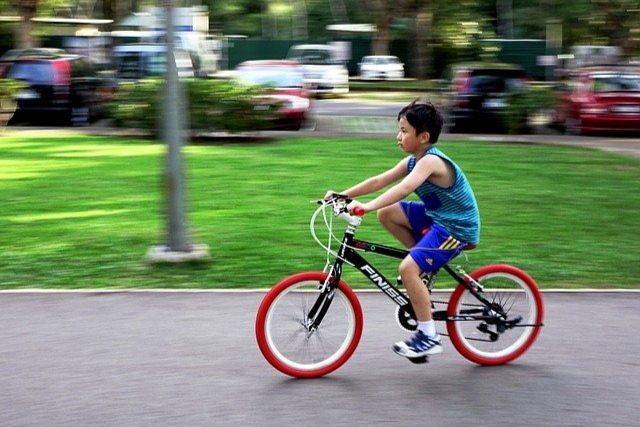As the global community celebrates World Bicycle Day, a toxics watchdog group urged the government’s health regulatory agency to stop the online selling of children’s bicycles with lead paint that may pose a serious health hazard.
EcoWaste Coalition on Tuesday bared that it conducted an investigation on lead paint hazard of bicycles marketed for young children ages 1 and a half to 6 years and found out the chemical exceeded the regulatory limit as imposed by the government.
The group purchased seven bright colored bicycles for children costing P540 to P2,300 each from each bike stores in Quiapo, Manila and from online dealers. It then screened them for lead containment and then sent the results to a private laboratory for confirmatory tests.
Two of the samples were discovered to have a lead paint that exceeded the regulatory limit of 90 parts per million (ppm), as stipulated in the Department of Environment and Natural Resources‘ Administrative Order 2013-24.
The bicycles purchased from Quiapo didn’t test positive for lead but the ones that were bought online were coated with lead paint.
Tests conducted by the Philippine Institute of Pure and Applied Chemistry revealed that the “Good Boy/Good Girl Bicycle” from Shopee and the “FANHX Bicycle” from Lazada had 6,850 ppm and 6,950 ppm of lead, respectively.
Both bore the “Made in China” tag the packagings, according to the coalition.
It said that it has already notified the local Food and Drug Administration, the regulatory agency in charge of toys and childcare articles, of the investigation and its findings.
The group also requested the agency to halt the online sale of bicycles tainted with lead paint to avoid unhealthy exposure to the extremely toxic chemical.
“Considering the limited number of samples that we can buy and subject to lead paint analysis, we urge the FDA to conduct a wider sampling of children’s bicycles being sold offline and online,” it said in a release.
“Our children deserve nothing less than lead-safe and non-hazardous toys,” it added.
The World Health Organization warned that young children are vulnerable to the toxic effects of lead and that they can suffer permanent adverse health effects, particularly relating to the development of the brain and nervous system.
“Young children are particularly vulnerable to lead poisoning because they absorb 4–5 times as much ingested lead as adults from a given source,” the United Nations agency said.
“Lead exposure can have serious consequences for the health of children. At high levels of exposure, lead attacks the brain and central nervous system to cause coma, convulsions and even death. Children who survive severe lead poisoning may be left with mental retardation and behavioral disorders,” it added.
WHO warned that being exposed to the chemical can also lead to anemia, hypertension, renal impairment, immunotoxicity and toxicity to the reproductive organs, among others.
EcoWaste Coalition chemical safety campaigner Thony Dizon said that while biking is a “fun and healthy exercise” for children, they can be exposed to the toxic chemical “if they pick up and eat flaking paint chips from a lead coated bike or ingest or breathe in lead dust.”
“Dust and soil contaminated with lead that gets onto children’s hands and mouths is the major pathway by which lead in paint contributes to their exposure to this chemical poison early in life,” environmental health scientist Dr. Geminn Louis Apostol, assistant professor at the Ateneo School of Medicine and Public Health, added.
“While the primary target is the brain and the central nervous system, lead exposure can also cause damage to other vital organs. There is no level of lead exposure that is deemed safe and without harmful effects to health,” he further said.
Benefits of using bikes
The United Nations declared June 3 as World Bicycle Day to draw attention to the benefits of using the engine-less vehicle such as its affordability and eco-friendliness.
“The bicycle contributes to cleaner air and less congestion and makes education, health care and other social services more accessible to the most vulnerable populations,” it said.
“For the poorest urban sector, who often cannot afford private vehicles, walking and cycling can provide a form of transport while reducing the risk of heart disease, stroke, certain cancers, diabetes, and even death. Accordingly, improved active transport is not only healthy; it is also equitable and cost-effective,” the agency added.










